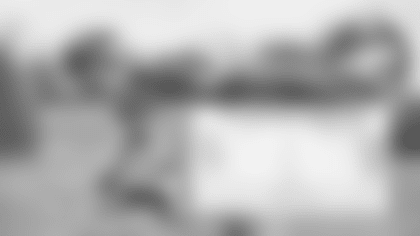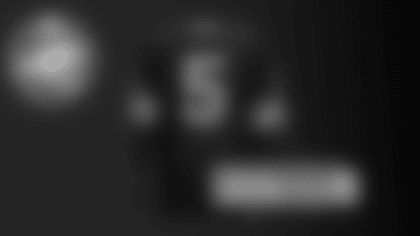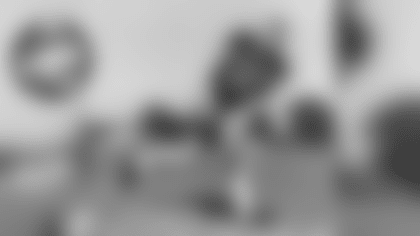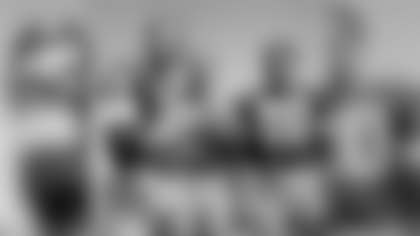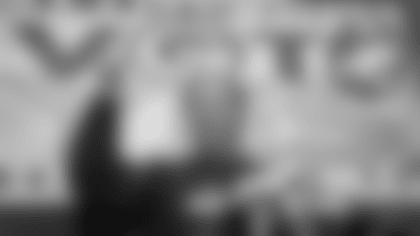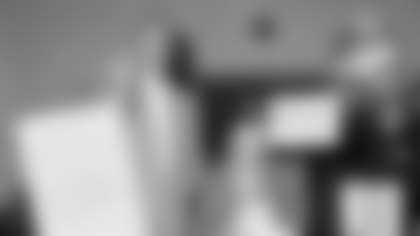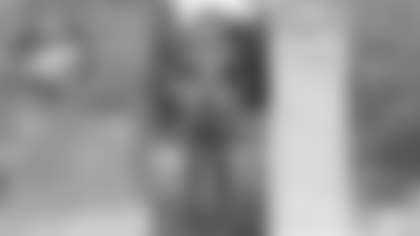Chad from St. Francis, WI
Have you done any research on the post-Lambeau, pre-Lombardi years? I think that time in Packers history is fascinating. Mostly, I'd like to know why Lambeau was dismissed.
Chad, I agree with you. As bad as the football was in the 1950s, or until Lombardi arrived in 1959, the decade produced some compelling storylines. Many were lifesaving: The 1950 stock sale, the integration of the roster, a series of outstanding drafts and the building of what is now Lambeau Field. There also was the fire that destroyed Rockwood Lodge, the effort to fire Lambeau, Gene Ronzani's unwillingness to go away after he was fired, and the firing of Scooter McLean and the six-week search for his successor.
That's quite a stew of history-shaping events.
But because it would be impossible to examine in detail each one, I'm going to plug my new book that is now available in stores and online. The title is: "Packers Heritage Trail: The Town, The Team, The Fans From Lambeau to Lombardi." The book covers the first 50 years of the Packers (1919-68), serves as a prelude to the 100th anniversary book that's my next project and covers each of those developments during the 1950s.
Mary from Camarillo, CA
An uncle of mine, Maurice Dalton, is pictured in an old photograph of a Packers team sometime in the early 1920s. However, I know nothing about his career. Could you find any information about him for me?

Your uncle, better known as Jack Dalton, was player-coach of the Packers in 1920. I've done considerable research on him and interviewed his son, also named Maurice, more than 15 years ago.
If I could turn into a ghost and be privy to what happened behind closed doors of one Packers season before I started following the team in the 1950s, it might be 1920. That season piques my reporter's curiosity, perhaps like no other.
Your uncle, Jack or Maurice, was named coach of the Packers in the summer of 1920 and was running the team when practice started. Then Lambeau, who had been captain in 1919, was the hero of the first game and re-elected captain a week into the season. Thereafter, Dalton and Lambeau seemingly shared authority. Dalton also started 10 of 11 games for the Packers: four at fullback and six at quarterback. Lambeau started nine of 11: seven at right halfback and two at left halfback.
Dalton coached Green Bay West High School that year, as well as the Packers. Lambeau coached Green Bay East High School. Into the 1950s, East vs. West was the bitterest of rivalries.
Dalton's son, Maurice, told me your uncle didn't like Lambeau and I suspect the feeling was mutual. Again, just what I've learned through my research would turn into too long of an answer here. That said, I covered the subject in my book, mostly in the chapter about the Indian/Acme packing plant.
Eldred from Mosinee, WI
My father and grandfather worked for the Green Bay Press-Gazette in the 1950s and '60s. My dad's godfather was Curly Lambeau. I was able to meet Packers on occasion and even got haircuts with them sometimes on Saturday mornings in the basement of the YMCA. I'm wondering about the relationship between the newspaper and the team, and about the people at the Press-Gazette.
Was your grandfather Eldred J. Robinson? I'm going to assume he was and that Eldred Jr. was your dad. If I'm correct, your grandfather joined the Press-Gazette in 1918, became advertising director in 1920 and served in that position until 1957, or shortly before his death. He also oversaw the creation of the annual Packers Football special edition. If I could interview the dead, Eldred J. would be high on my list. I'm guessing he was extremely tight with Curly and that's why Curly was your dad's godfather.
Also, I didn't know that you could get a haircut in the basement of the Y. I find that interesting, too, because I spent a lot of time at the downtown YMCA in the 1950s. My first barber was Joe Gryboski, whose shop was in the Northern Building and close to Curly's office there before he moved in 1949. I'd love to interview Joe, too. Barbers and ad men have been known to have the inside scoop and a gift of gab.
As for the Press-Gazette, I think it can be safely said that if not for the newspaper and people like Andrew Turnbull, George Whitney Calhoun and others there would be no Packers today. Two of the chapters in my book are about the birthplace of the Packers, the old Press-Gazette building on Cherry Street where the team was founded, and the current Press-Gazette building. A lot of Packers history took place at both locations.
Robert from Studio City, CA
I'm writing because my grandfather recently gave me an offer letter from the Green Bay Packers dated April 23, 1928. The letter was for my grandfather's uncle, Lawrence Apitz, who never played professionally. It had the Press-Gazette letterhead with John K. Kline listed as vice president and editor, and it was signed by Calhoun. Were those letters common? The Packers Heritage Trail is amazing and what a cool thing to have a statue of Calhoun.
Thanks. In line with my previous answer, I should note that before the Packers could afford their own office, the Press-Gazette was essentially their office during the 1920s.
As for the letter, the 1928 Packers opened practice on Sept. 10, played the Minneapolis Marines in an exhibition game six days later and then opened their NFL season against the Frankford Yellow Jackets on Sept. 23. I found no reference to your grandfather's uncle being on the roster at any point during that span.
But was that the same Lawrence Apitz, who played for and coached under the legendary Amos Alonzo Stagg at the University of Chicago?
Matt from Santa Rose, CA
I'm a diehard Packers fan and recently made my first trip to the holy land (Green Bay). I'm 30 years old and fascinated by the older players, especially Curly. One thing I wanted to do on my trip was find the original Indian Packing Plant building, but nobody knew where it was. Is the structure still standing? Also, I understand the Packers allowed people to buy stock to save the franchise due to a lawsuit by a gentleman named William Bent. But during my stadium tour I was told the Packers sold stock just to make money.

First things first: I hope you're safe from the fires. Also, if you didn't tour the Packers Heritage Trail on your trip, please come back. Yes, two of the buildings of the original Indian Packing Plant are still standing and so is the Brown County Courthouse where the Willard Bent lawsuit was tried in 1933. Both are stops on the Packers Heritage Trail and marked by commemorative plaques that tell about the history of the buildings.
The first public stock sale was held in 1923 when the Green Bay Football Corporation was organized. The second stock sale, held in 1935, followed the Bent trial and preceded the creation of the similarly structured Green Bay Packers, Inc. Both of those sales, as well as the one in 1950, were held to save the franchise when it was broke and on the verge of folding.
In my book about the Heritage Trail, the chapter I enjoyed working on the most was the one about the history of the packing plants. I also devoted at least several paragraphs to the Bent trial in the chapter on the Brown County Courthouse.
Richard from Montello, WI
I own a book called "The Green Bay Packers," copyrighted in 1946 and written by Arch Ward. In front there's a handwritten note from Herb Nichols to a friend. It says Nichols was the Packers' first right end and played from 1919-21. I'm not the biggest Packers fan, but the book has some unique insight into the Green Bay area. Are you familiar with it?
Ward's book was the first written about Packers history. He was sports editor of the Chicago Tribune and maybe the most famous sports editor in the country at the time. He also was a product of Notre Dame and considered Lambeau to be a good friend. Not everything in Ward's book was true. He maybe depended on Lambeau's word and memory too much. But considering most books written about general Packers history over the past 30 years are filled with fantasies and falsehoods, I think Ward's might still be the best of the bunch.
As for Nichols, he started playing with the Packers about halfway through their first season and started the last three games at right end. In 1920, he played only in the final game against Milwaukee after starting end Riggie Dwyer lost an arm and a leg working the nightshift in a local railroad yard. Nichols didn't play in 1921.
FYI: I'm guessing autographs signed by 1919 Packers are rare.
Jim of Rio Rancho, NM
Your story about the construction of new City Stadium got me wondering when the team offices were built there. My mom worked in the Packers' ticket office above the chili place – Chili John's? – starting in about 1956. I remember meeting her downtown after work and then her moving to offices at the stadium. Thanks for the great articles and hope you can create a timeframe for me.
From 1949 to 1963, the Packers' offices were located downtown at the south end of Washington Street. The Packers moved to the stadium in 1963, over Vince Lombardi's objections it should be noted, when they built an administration building at the north end of new City Stadium.
Chili John's was located on Pine Street about five blocks away from the downtown office so I think you're confused about that. Again, the former office building is on the Packers Heritage Trail and there's a lengthy chapter about it in my book.
Scott from Saint Charles, IL
My earliest memories of Packer football were of Dan Devine's teams, but I've read many books about the Lombardi era. I'm particularly fascinated with the descriptions of Green Bay in the 1960s. The mental images of Lombardi eating his breakfast every day at a lunch counter, patronizing local supper clubs on weekends with his wife and golfing with cronies at the country club. The players hitting the nightclubs in a city that small seems surreal. I know Green Bay isn't much larger today, but I can't imagine the multimillion-dollar coaches and athletes today having this kind of intimacy with the city.
I grew up in Green Bay in the 1950s and '60s and what you wrote was true. That's why I created with the help of many others the Packers Heritage Trail. The bond between the Packers and the community is what makes the story of this football team what I believe is the greatest in sports.
That's why one of my favorite quotes in my book was from Steve Liebert, owner of Bosse's News Stand, a business that has been around for more than 100 years, when he tried to explain what it was like when the players were more visible and constantly around town.
"They were part of your group, almost like your buddies," Liebert told me. "You'd wave to them and they were really friendly. It was kind of neat. People didn't bug them. They didn't run up to them and ask for their autograph. People would just say, 'Hi,' and talk to them, and they all seemed to be around town."
As you pointed out, things have changed, but I wouldn't blame that all on today's coaches and players. I'm not so sure the people on the streets haven't changed as much, if not more.
Richard from McLean, VA
I remember still in the 1960s the Packers would have the Lumberjack Band along with the Golden Girls play at different locations around the stadium during breaks, halftime, etc. Whatever happened to the band?

The Lumberjack Band evolved into today's Tundra Line, but the Lumberjack name was dropped during the Vince Lombardi era. The band was a big deal from the 1920s into the '60s, and that was why we added a statue of the Lumberjack Band drummer to the Packers Heritage Trail Plaza this summer. Here's what the plaque next to drummer says.
The Lumberjack Band was once synonymous with the Green Bay Packers. It performed at home games, pep rallies and other celebrations; and energized players and fans alike with its rollicking capers and snappy music. Loosely organized in 1921, the Lumberjacks took Chicago by storm that season when they led an invasion of some 500 fans for the first Packers-Bears game. The band left Green Bay on a midnight train and upon arriving in Chicago in the early morning hours marched through the Loop before heading out to Cubs Park for the game. Dressed in hunting caps, mackinaws, flannel shirts, corduroy pants and high boots, they kept a lively pace playing such songs as "On Wisconsin," and "How Dry I Am." In 1939, the Packers took over sponsorship, dressed the band in red coats and green trousers, and made the association official. Lore has it that Vince Lombardi ordered the band to change its name to Green Bay Packer Band and adopt a more professional look after the Packers won their second straight NFL title in 1962. At that point, the Lumberjack name was abandoned and members started wearing prim green blazers and grey trousers. Whatever the case, Lombardi once called it, "The best playing band in the National Football League."
Chad from Tarpon Springs, FL
Was the reason to cheer on the Packers and attend games the same in the Lambeau era as it is today? Did people put on their GM hats? Was the impetus for stock sales the same? Basically, I guess the question comes down to: Was the consanguinity of the team and its community different prior to the Favre era?
That was the big picture theme of my book, the relationship of the team and the town during that bygone era. What's not in the book is the word consanguinity, although it would have been appropriate in several places. My bad.




